16 Stunning Staircase Ideas to Inspire Your Own Staircase Design
Want to transform your home by moving the staircase but don’t know where to start? Check out our examples of stare-worthy staircases that will step up your home’s layout and familiarize yourself with staircase lingo and design principles.
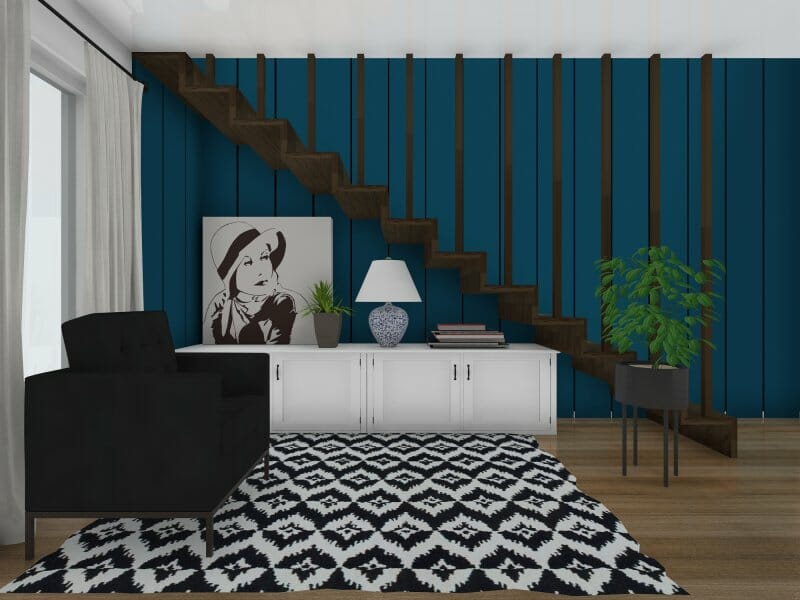
Staircases might be one of the most functional architectural features of your home. Their purpose, after all, is to carry you from one floor to the next, but that doesn’t mean they need to be utilitarian. One way to step up your home’s style is a staircase design that makes the stairs a focal point of your interior design.
Cantilevered steps, minimalist railings, glass balustrades, timber treads. The possibilities are endless but don’t get discouraged. The RoomSketcher App is an easy-to-use home design and floor plan tool that allows you to create a staircase design and see how different styles and finishes will look in your home in 3D.
Staircase Design Ideas
Staircase With Glass
The warm, natural wood steps and black framed glass wall are a perfect blend of form and function. The glass wall offers welcome sound reduction and reflects or allows natural light to pass through, making the interior feel more spacious.
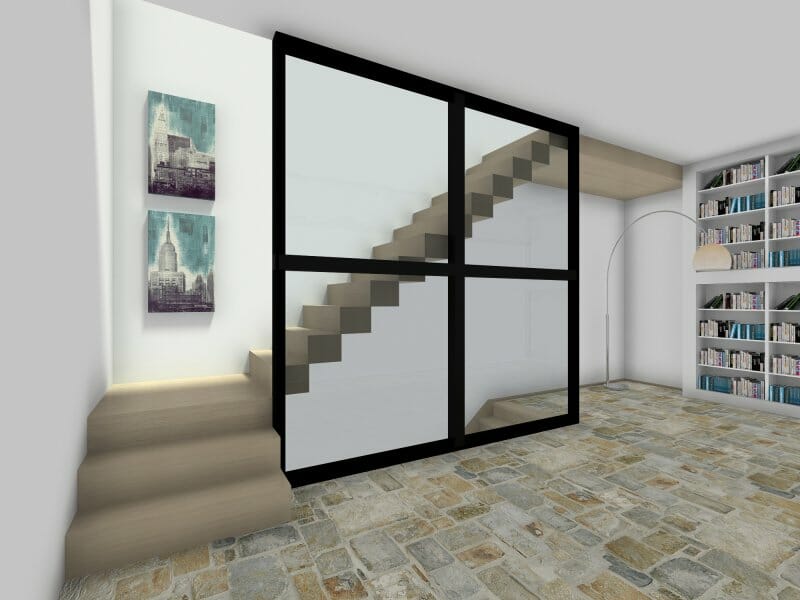
Staircase Design With Lighting
This floating timber staircase is in a dimly-lit space, so the circular lights installed at each tread and at the landing ensure safety.
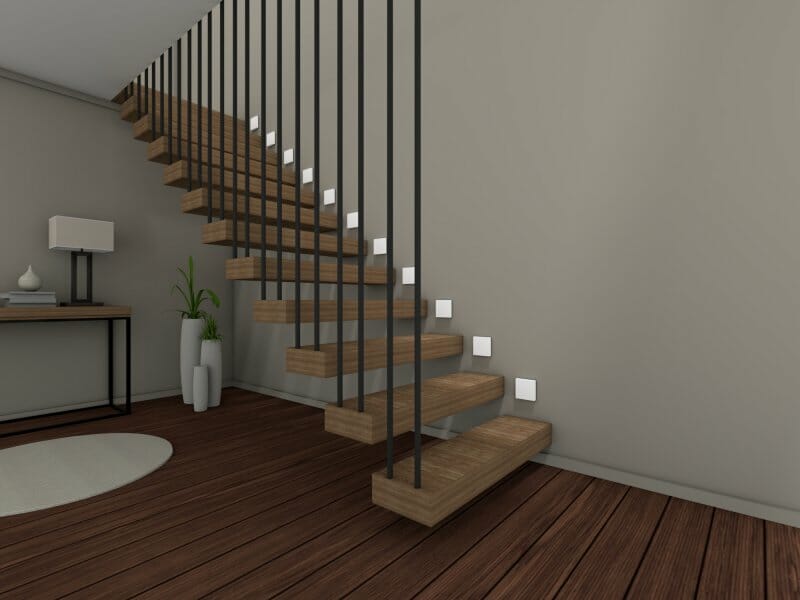
Small Space Stairs Design
This white floating staircase delivers a barely-there design and is almost invisible against white walls. It’s suspended to the ceiling with a white metal hanging bracket.
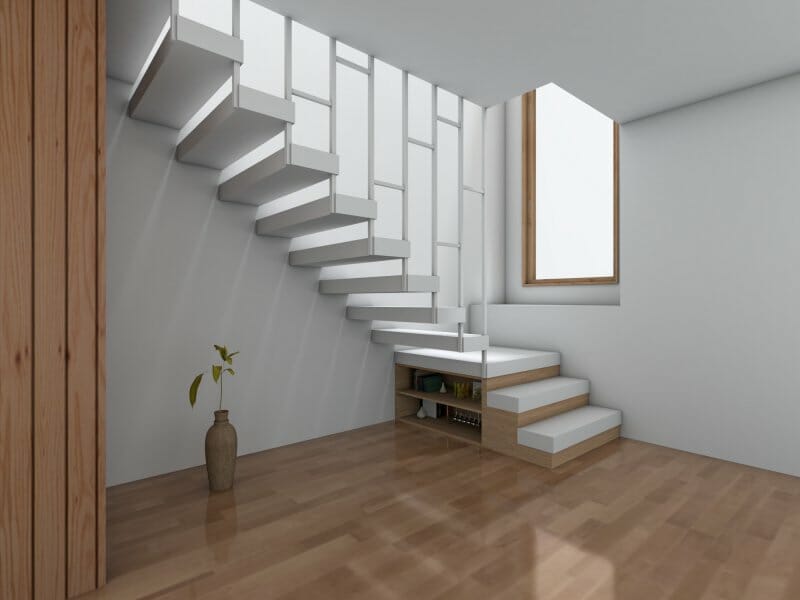
Staircase Design With Granite
Granite is a natural rock that’s often used for kitchen countertops because of its elegance and durability. Those same qualities make it a great option for staircases. Granite slabs are heavy and require sufficient support.
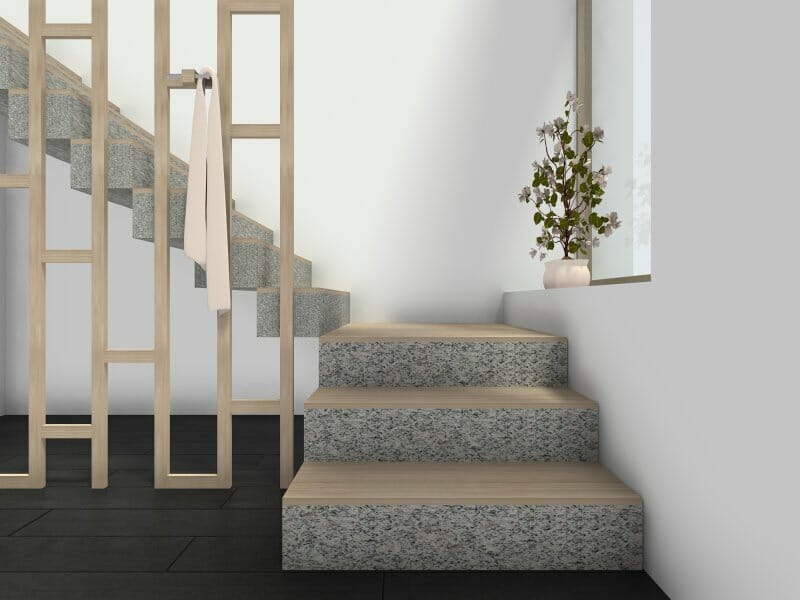
Staircase Design With Wood
This stunning blonde wood straight staircase incorporates hidden storage to help keep clutter at bay. It features lit niches to display potted plants, as well as shelves to showcase treasured keepsakes.
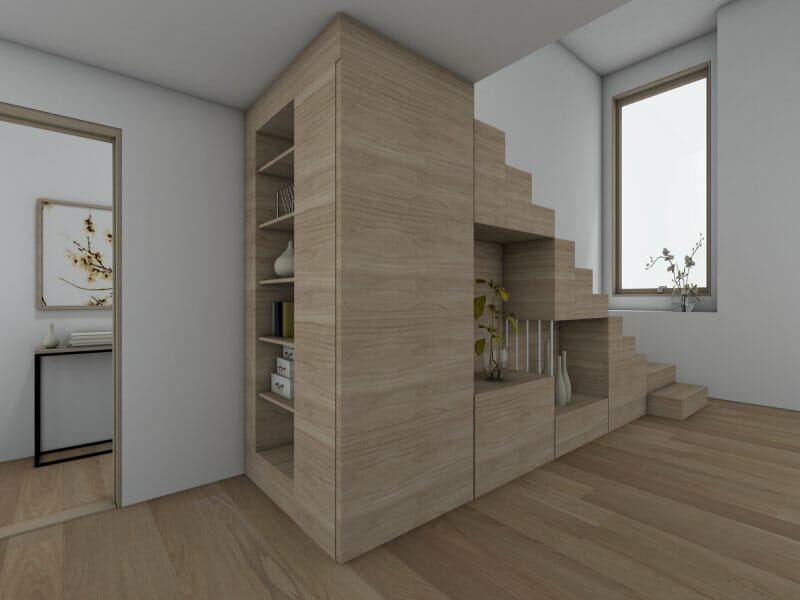
Staircase Design With Bathroom
Tired of lineups to use the washroom? Create a powder room underneath the staircase in a space that would otherwise remain unused.

Desk Under Stairs
If you work at home at least part of the time or your kids need a dedicated space to do their homework, the space under the stairs offers untapped potential.
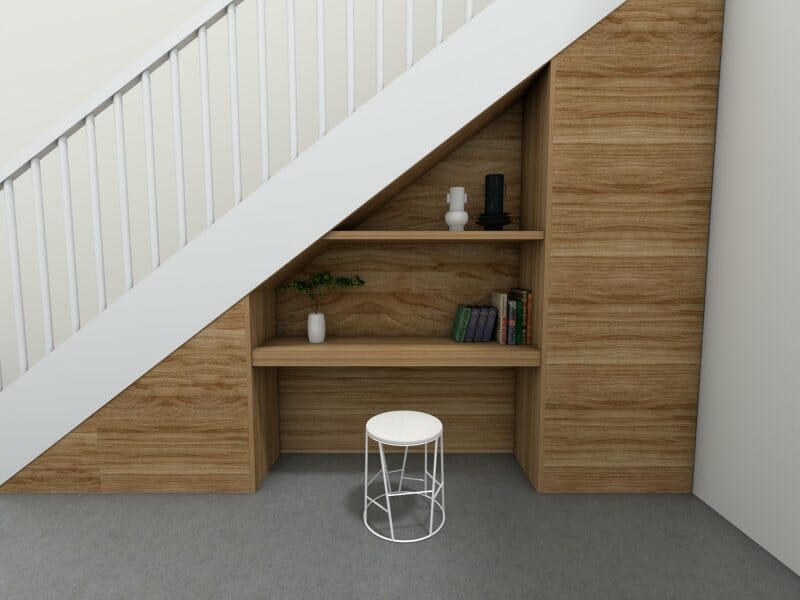
Staircase Design With Brick Wall
This straight staircase is nestled against an exposed brick wall that provides warmth, character, and texture. Thanks to a floor-to-ceiling metal rod guardrail, the brick wall is a stunning backdrop to the living room.
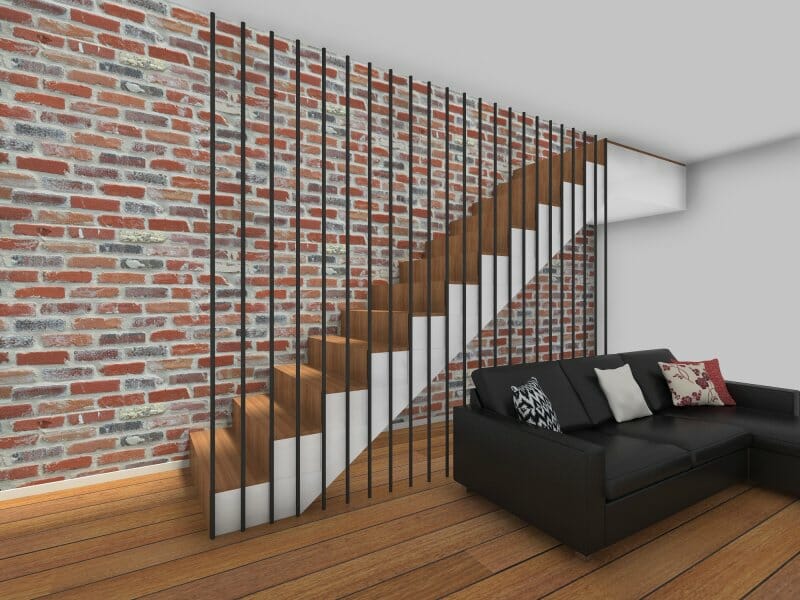
Design With Seating Below Staircase
The last tread of this natural wood staircase turns the corner and morphs into a convenient bench that can be used as a reading nook or a place to sit while putting on or removing shoes.
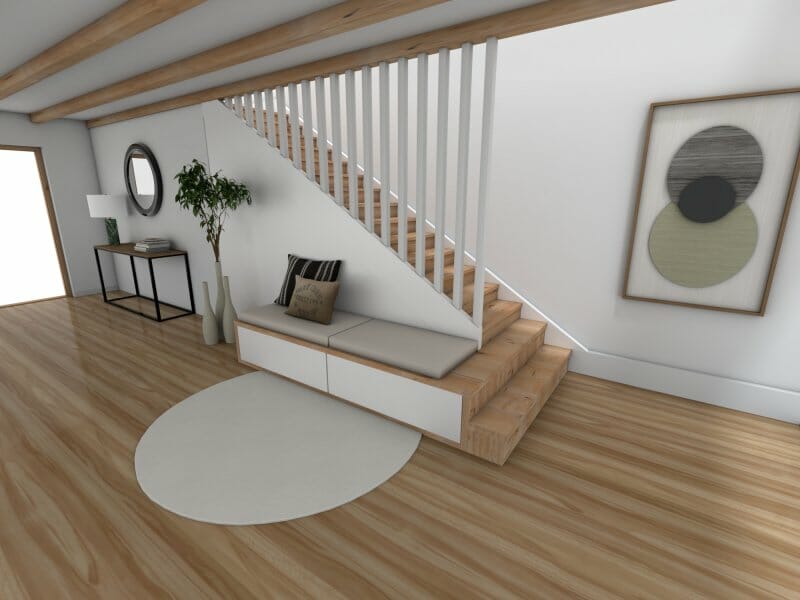
Staircase Design Black and White
This striking black and white staircase feature decorative risers. A built-in bench has been added to the wall of the stairs and provides welcome storage.
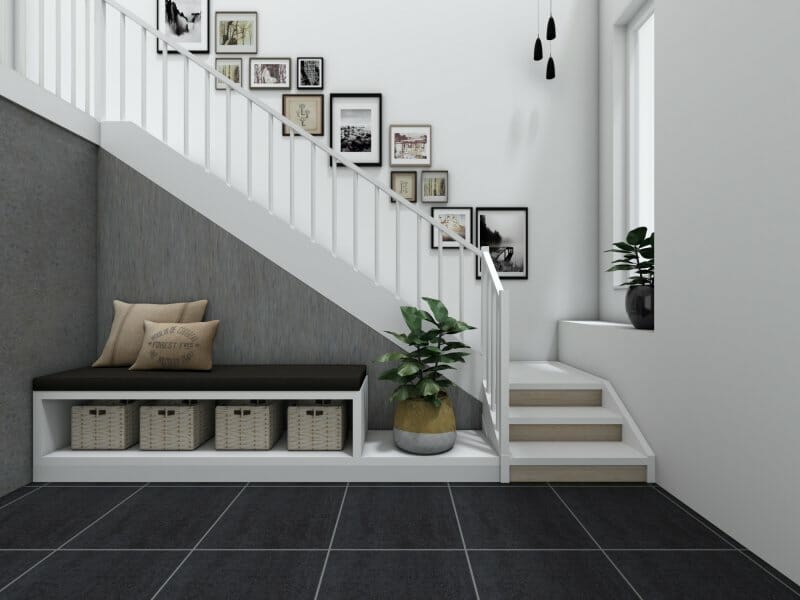
Staircase Design Marble
This luxurious staircase is surrounded by marble walls. Lights at the base of each riser emphasize the staircase’s beautiful treads.

Staircase Design Modern
This modern staircase features a minimalist design and floating stair treads that allow the expansive windows to flood the space with natural light.
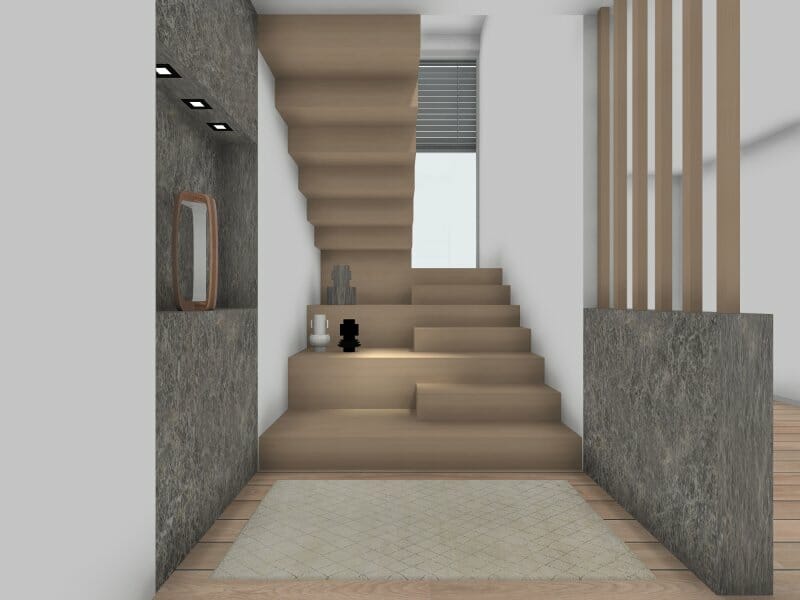
Staircase Design Metal
A metal rod guardrail attached to each stair tread and suspended to the ceiling provides safety while ensuring the staircase is a focal point of the home’s minimalist design.
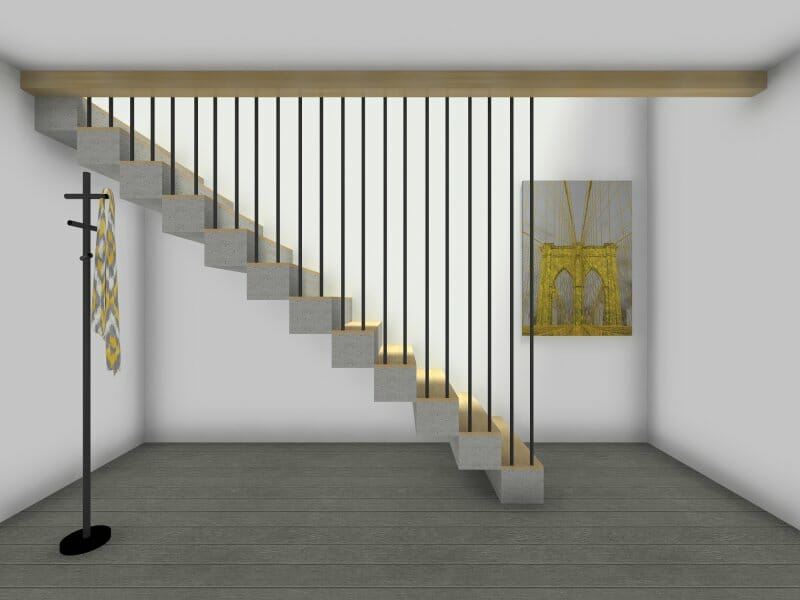
Wine Storage Under Staircase
These under-the-stairs wine storage units take advantage of unused space and show off favorite vintages. Kick things up a notch by creating a climate-controlled unit.
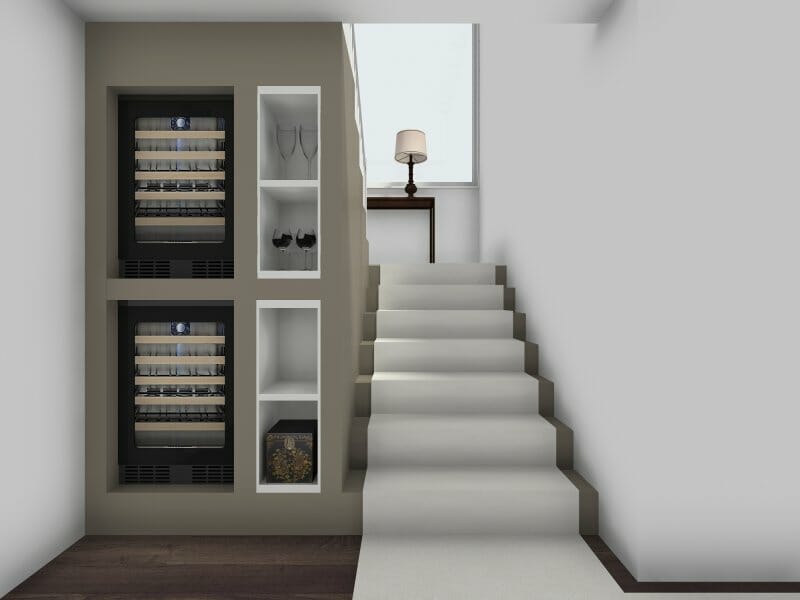
Staircase Design Railing
Vertical wood slats create a sense of separation between the staircase and the room and allow light to pass through.
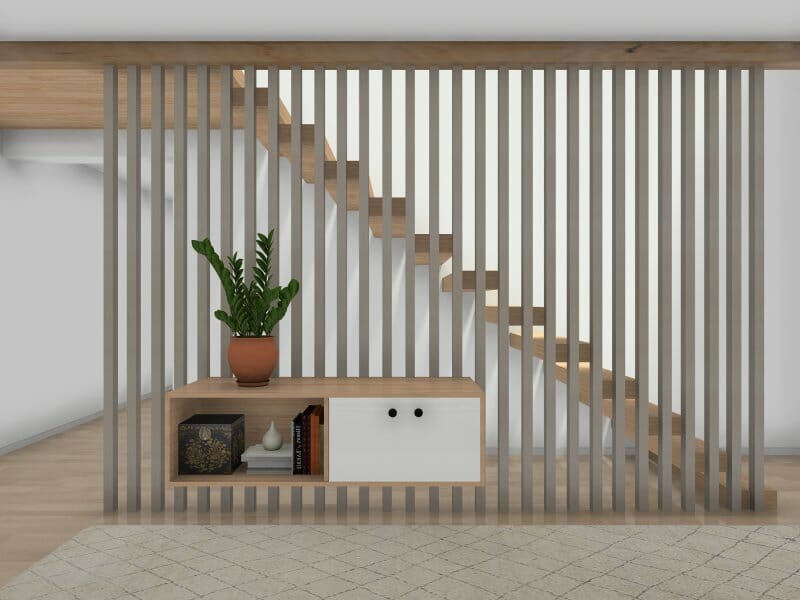
Spiral Staircase Design
Spiral staircases require just a small footprint, making them a great option if you don’t have a lot of space. They’re also fun and whimsical and prove that less can be more.
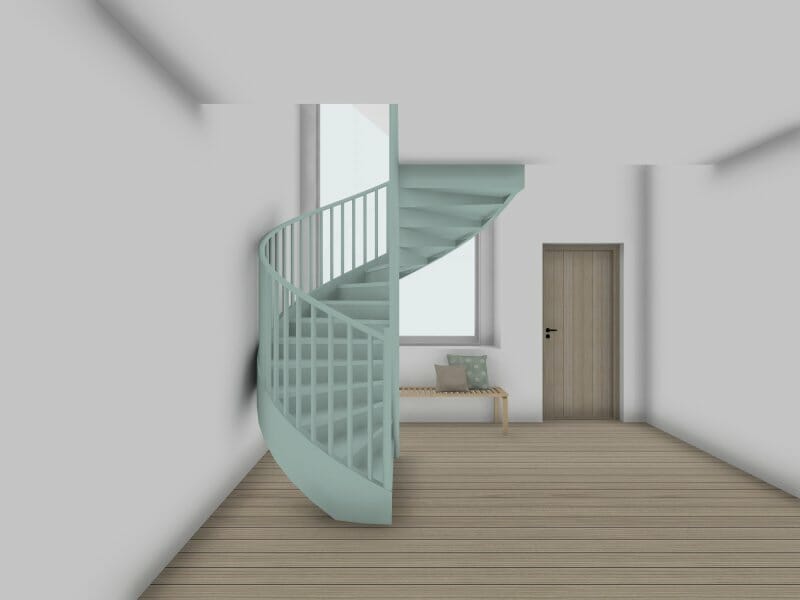
Standards for Staircase Design
You likely walk up and down the staircase in your home countless times a day without giving any thought to its many components but when planning a staircase design, it’s important to understand a staircase’s anatomy.
For starters, the stringers are the main framing component of a staircase and hold the treads and risers. Most people call the part of the staircase that you walk on the steps, but in staircase terms, they’re called treads or run.
The vertical part of the stairs in between each tread is called the riser and it supports and connects successive treads. Modern architecture often incorporates staircases without risers to achieve an open-air, minimalistic look.
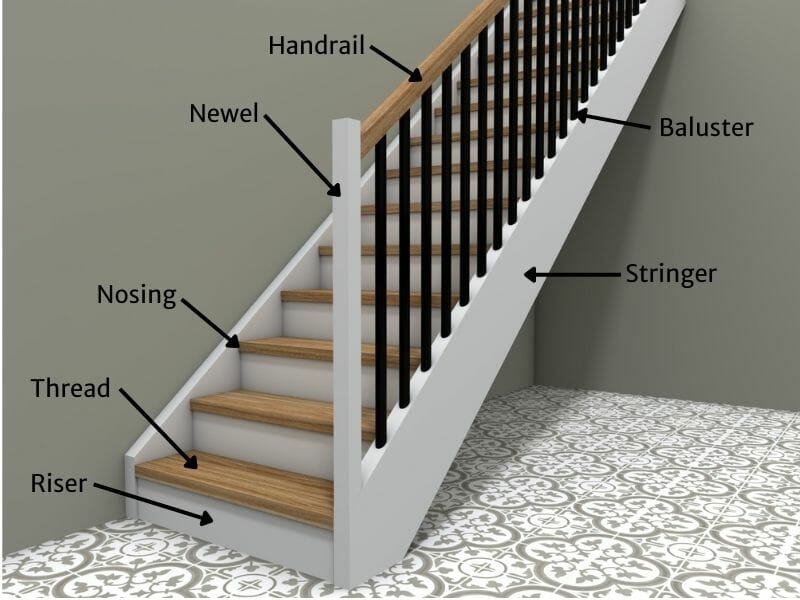
The rise is the vertical height between two consecutive treads. The landing is the horizontal platform between two successive flights of a staircase and facilitates the change of direction of the flight. A landing that extends for the full width of the staircase is known as a ‘half-space landing,’ while one that extends half the width is known as a ‘quarter-space landing.’
The nosing is the part of the tread that projects beyond the face of the riser and its length is equal to the width of the stair. Choose from a variety of designs, such as bull nosing, waterfall nosing, and square nosing. But a nose is not an essential part of a tread. Plenty of staircases, especially contemporary designs, are constructed without a nose.
Other components of a staircase include the flight, headroom or headway (the vertical height between the tread of one flight and the ceiling of the overhead construction, handrail, baluster, balustrade, pitch or slope, run, soffit, newel post, string or stringers, and spandrel.
What Are the Different Types of Staircases?
When choosing a staircase design, you’ll quickly discover there are numerous types of staircases, many of which have unusual names like ‘switchback stairs.’ Here’s a sample from a long list of stair types:
Straight staircase
This is the simplest staircase design and the easiest type of stair to ascend and descend as well as build. Choose from one of two types: straight or straight with a landing.
L-shaped staircase
This is basically a straight staircase with a turn or a 90-degree bend. It’s sometimes referred to as a ‘quarter-turn stair’ because its landing is either closer to the top or bottom.
U-shaped staircase
This staircase consists of two parallel flights of stairs joined by a 180-degree turn landing. It’s also known as ‘switchback stairs’ or ‘half-turn stairs.
Spiral staircase
In a spiral staircase, the steps attach to a center pole. Though it’s a space-saving design, it’s not easy to ascend or descend.
Winding or curved staircase
These terms refer to a staircase that makes a turn without including an intermediate landing or platform to provide a flat rectangular turning space.
What Are the Typical Dimensions of a Staircase?
Staircase dimensions are an important part of staircase safety. Here are the answers to three common questions regarding standard dimensions for staircase design:
- What is the minimum width of the stair? The minimum recommended width for a staircase is 3 feet or about 92 centimeters. You can expand it as much as you’d like.
- What is the maximum height for a step/riser? The ideal step height is 7.2 inches or about 18.3 centimeters.
- What is the maximum dimension between balusters? The maximum dimension between balusters – often called ‘pickets’ – is 4 inches or 10 centimeters so a small child cannot fit between them. If the treads are deep, you might need three balusters per step.
FAQ
Using the RoomSketcher App, draw your floor plan, find the best stair layout and try different styles and finishes for your staircase design. The RoomSketcher product library offers more than 40 different staircases — including straight stairs and switchback stairs — to help you imagine the possibilities. The size and orientation of every staircase can be easily adjusted to suit your needs.
The Replace Materials feature allows you to customize materials and finishes. Change the finish on stair treads, risers, stringers, railings, and more. Select from a wide range of wood and metal finishes or match brand-name paint colors with the custom color picker.
You’ll be able to visualize how different staircase designs will look. You can also save and compare your options so you can design a perfect staircase for your home and the way you want to live. The results will be well worth the effort and the investment!
A stairway is a group of steps that allows you to walk up or down. A staircase is a connected group of stairs or a flight of stairs, which means a staircase could be a set of connected stairways.
Because stairs typically don’t bear any structural load for your house, you can move or alter the stairs without risking structural damage. Moving stairs is often relatively straightforward but will be more complicated if you want to relocate your staircase to an area that bears a load for your home.
Just like tearing down walls to create an open-concept floor plan, you’ll need to do your due diligence, such as enlisting the services of a structural engineer, architect, and contractor as well as obtaining a building permit. You’ll need an inspector to approve your new set of stairs to ensure they abide by local building codes.
There are lots of good reasons why you might want to move a set of stairs, especially if you’re gutting your home’s interior. Moving stairs can dramatically alter the look and function of your house. If you want an open-concept floor plan, for instance, but have closed stairs — meaning walls on both sides — moving them can give you more space, improve the line of sight and brighten your home.
According to some estimates, the cost to install a main staircase averages $2,000 to $5,000 USD, while the cost to remove and replace an existing staircase can be as much as $10,000 USD. Updating the look of your existing staircase by replacing the treads and risers can cost between $3,000 and $4,000 USD.
The final tally will depend on numerous factors, including how much demolition the project will entail and whether you plan to reuse your existing set of stairs or start from scratch. Will you invest in new treads, such as hardwood or granite, and/or new stringers?
You’ll need to calculate the cost of dimensional lumber to fill in the joists and build a wall or two. You’ll also need to determine how you’ll finish the flooring around the old stair opening and the new set of stairs and make any necessary repairs to the walls.
Next Steps
With the RoomSketcher App, you can create high-quality floor plans and 3D visualizations quickly, easily, and affordably. What are you waiting for? Make the stairs a focal point of your interior design and take your home’s entryway to a whole new level!
Don't forget to share this post!
Recommended Reads
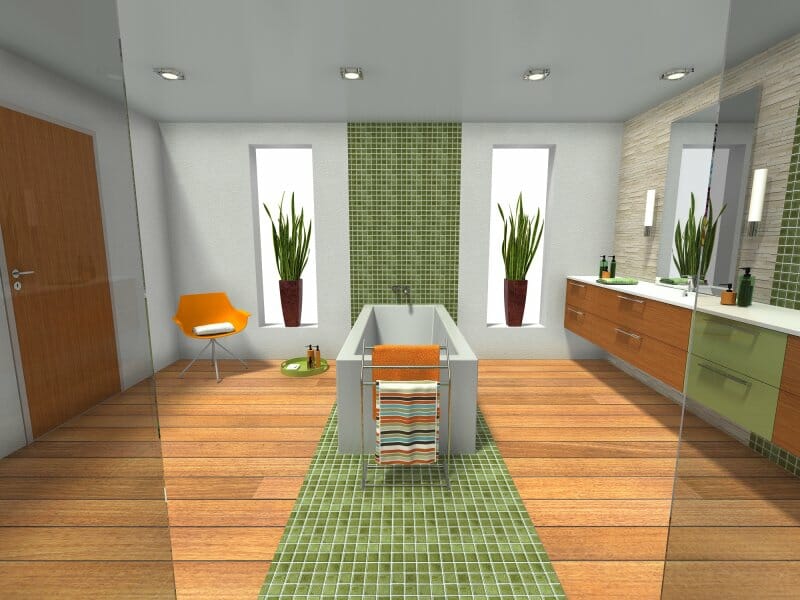
Visualize Your Flooring Design Ideas
Visualize how different flooring design ideas will look in your home - in 3D! 100s of floor materials to choose from - wood flooring, tiles, wall to wall carpet and more! Find the perfect look for your home.

Visualize Window Designs Online
Visualize window designs online with RoomSketcher. See how different window styles and finishes will look in your home - in 3D! Hundreds of windows to choose from - traditional, modern and more!
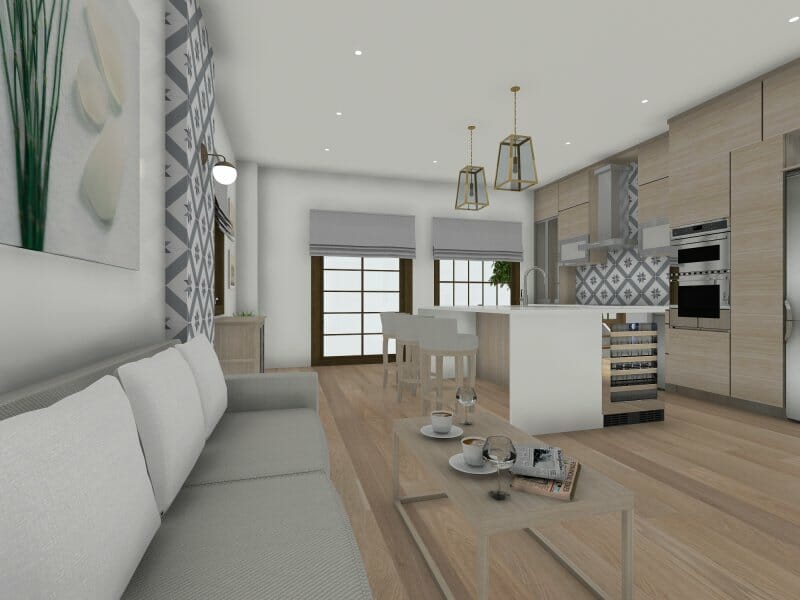
Interior Design Ideas: Visualize with RoomSketcher
Bring your interior design ideas to life with RoomSketcher. Create room designs, floor plans, and visualize your ideas in stunning 3D.
